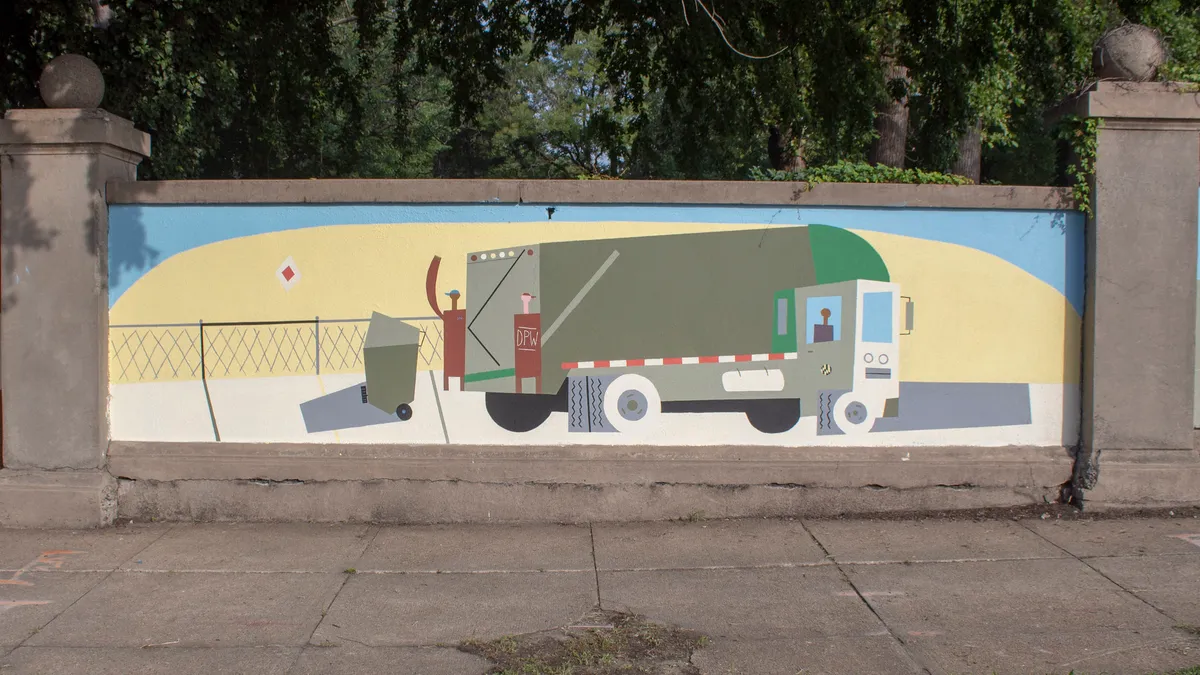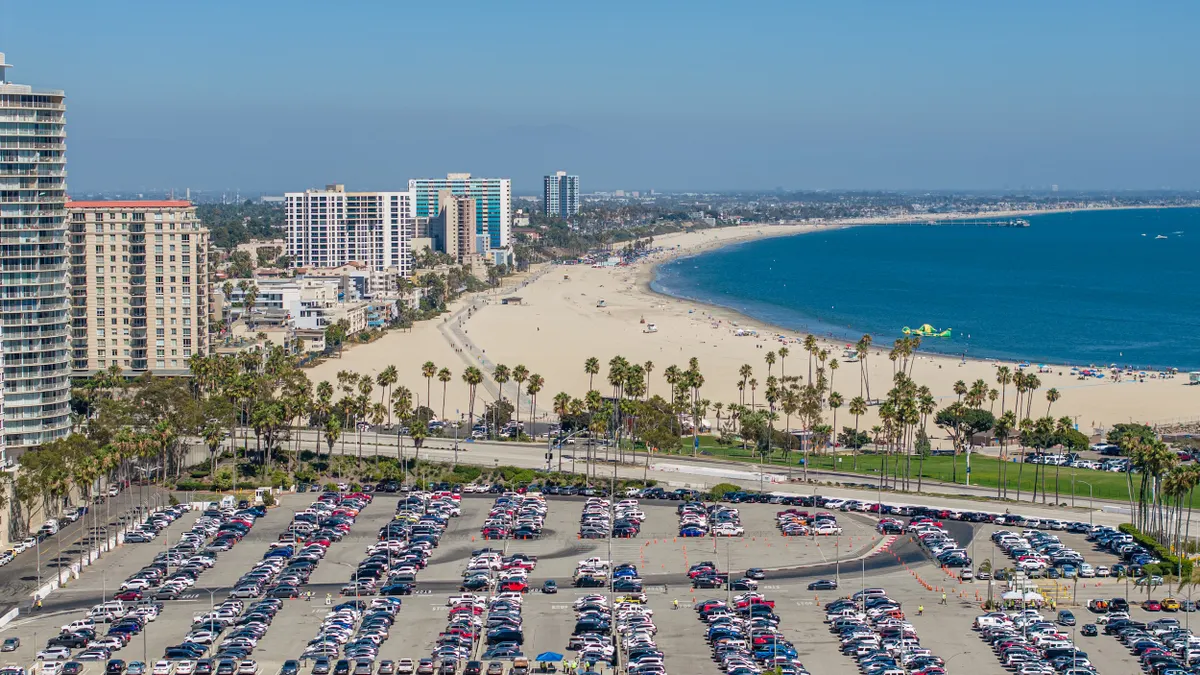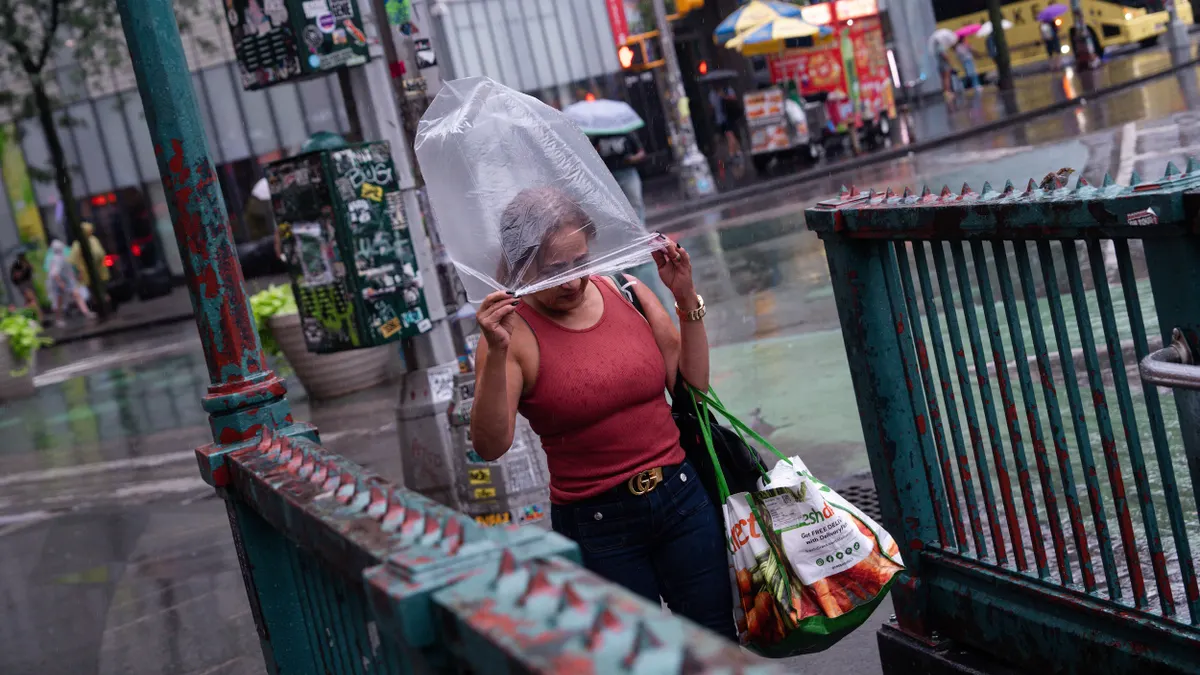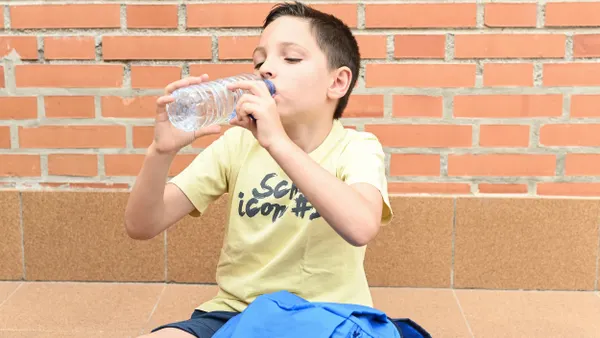For decades, much of Baltimore City’s waste has been handled at the mass burn combustion facility run by WIN Waste Innovations. But in the city’s latest draft 10-year solid waste plan, slated for an up-or-down vote later this year, leaders are searching for ways to shift as much waste as possible away from the facility, even as they acknowledge it will likely remain in operation.
Environmental and community advocates in the city have long decried what they see as a lack of action to improve pollution concerns and shut down the plant, formerly known as BRESCO. Marvin Hayes, founder of the Baltimore Compost Collective, often visits schools near the plant for educational outreach. He said he asks students two questions: what's your favorite fruit or vegetable and if you or your family have been affected by asthma or cancer.
“Ninety-five percent of the students in those schools that are surrounded by the incinerator that lives in those communities are affected by asthma,” Hayes said. “We must have infrastructure here to be able to separate those materials and deal with them in a sustainable way, where it's not causing health damages to people.”
WIN Waste, for its part, says there is “no link” between emissions and asthma and defends its record in the community. While the facility has been cited as a leading local source of industrial emissions, independent reports have also found that vehicles are the largest source of air pollution in Baltimore overall. Described by WIN Waste market manager Michael Dougherty as a “ship of Theseus,” the incineration facility itself has gone through multiple equipment upgrades and changes since it opened in 1985, including renovations that were completed this summer. Those $45 million upgrades, which WIN Waste agreed to following a legal battle with the city, lowered nitrogen oxide, lead and other emissions.
While the incinerator remains a focal point, the city is also driven by a climate action goal to reduce landfill emissions and a state-mandated 35% recycling rate goal. Those goals, along with a refocus on waste prevention and better management of sustainable materials, form the backbone of the plan the city’s Bureau of Solid Waste intends to follow under the auspices of the Department of Public Works into 2033.
Building out alternatives to the incinerator will take money and time. Among the proposals in the city’s draft plan are a new Eastside Transfer Station operational by 2030, a larger regional transfer station operational later that decade, adding in-city MRF capacity and more. The city left the option open to allow private contractors to operate new facilities, and is anticipating capital expenditures on expanded transfer capacity alone could near $90 million.
After receiving approval from the Maryland Department of Environment, the Baltimore City Department of Public Works now needs to submit its draft solid waste plan to the city council for approval.
WIN Waste sees a role for itself in Baltimore’s future, despite activists’ long campaign to shut down the incinerator. The company says that it provides a net benefit for Baltimore by reducing the volume of the city’s waste, and it has worked to partner with local organizations like 4MyCiTy to offer alternative solutions for food waste.
Following a facility tour demonstrating recent emissions upgrades in May, Dougherty said the region supplied “more than enough volume” to keep the facility running at capacity for some time.
“We are big proponents of the road to zero waste. But the road to zero waste is a long one, and we feel that we'll be featured prominently along the way,” Dougherty said.
The future of incineration and landfilling

The Bureau of Solid Waste's roadmap to divert waste from landfilling and incineration has drawn some praise, even as advocates were agitated by the plan's expectation that WIN Waste’s facility would remain operational.
In 2021, Baltimore managed 414,000 tons of waste, sending 136,000 tons to the incinerator and 210,000 tons directly to the Quarantine Road Landfill. WIN Waste’s ash also goes to the landfill thanks to a contract with the city.
The amount of waste handled by the bureau is a fraction — roughly 20% — of the total amount of waste sent to WIN’s facility. As such, the bureau’s plan strikes a measured tone about incineration’s future. While the city’s current contract with WIN extends through 2031, the 10-year plan anticipates that WIN Waste will continue to do business with Baltimore County and private haulers in the future.
“Until there is universal, coordinated adoption of waste diversion practices across public and private sectors, it is likely that the facility will continue to operate at or near its current throughput,” the plan’s authors write.
Besides avoiding the controversial incinerator, the plan’s authors are also seeking ways to reduce waste sent to the Quarantine Road Landfill, even as the bureau moves ahead with an expansion of the facility. Such an expansion, to connect the facility with the nearby Millennium Landfill, could cost $99.5 million, and is expected to push back the end of the landfill’s service life from 2028 to 2035.
For Brenda Platt — a longtime co-director of the Institute for Local Self-Reliance and a contributor to the Less Waste, Better Baltimore report commissioned by the city in 2018 — much of her frustration with the bureau comes from its willingness to perpetuate disposal destinations rather than working toward reduction, recycling and reuse of materials.
“There's always money to expand a landfill,” Platt said. “And somehow, there's just not enough money to actually do the things that we need to do to cut the waste to begin with and save that landfill capacity. And that's, I think, the crux of the issue here.”
She was glad to see an increased focus on waste diversion practices in the plan, but felt that those ideas missed the fundamental complaint from environmental justice advocates: That the incineration facility has operated in an underserved community for too long.
“Let's say the city is successful in reducing the flow of material. So what, we're still gonna have out-of-city waste from Baltimore County come into that community and burn trash in an environmental frontline community? It doesn't really make that much sense,” Platt said.
Jennifer Combs, public relations coordinator for the Department of Public Works, did not directly address environmental justice concerns related to continued incineration when asked about their specific omission from the draft plan. Instead, she pointed to the plan’s waste diversion initiatives, noting it includes “calls for a coordinated cross-sector effort to reduce waste and adopt more sustainable materials management practices.”
“Throughout the plan, the City has identified and committed to expanded waste diversion initiatives over the 10-year planning period,” Combs said in an email. “With the implementation of these initiatives, the City anticipates reducing its dependence on both incineration and landfilling, recognizing the environmental impacts of both waste management practices.”
The plan’s ideas for rerouting waste away from landfilling and incineration, or at least those facilities within city limits, are ambitious. In addition to its waste reduction strategies, the plan also calls for increasing daily capacity at its Northwest Transfer Station and expanding long-haul transfer capacity to reduce reliance on the WIN Waste facility.
A proposed new regional transfer station would include a rail spur and have a capacity of up to 640,000 tons per year, allowing it to process all of the city's residential and commercial MSW. The plan estimates such a facility would cost roughly $70.5 million and projects that it could become operational around 2037.
The plan’s authors note that with the Quarantine Road Landfill likely to reach full capacity in 2035, even with an expansion, the regional transfer station would provide “a long-term method to manage its solid waste.” They say that it could facilitate the transfer of Baltimore’s waste to regional landfills or “even more distant facilities as needed,” routing it away from the incinerator.
The bureau lists several possible sites for the proposed regional transfer station, including two in the Port of Baltimore and one in Baltimore County's Western Acceptance Facility. Meanwhile, a related proposal for an Eastside Transfer Station would allow small haulers, mixed refuse loads and single-stream recycling collectors to consolidate volumes in the southern and eastern portions of Baltimore for the first time. If approved, that facility could be ready by 2030 at a cost of roughly $18.6 million.
Despite her concerns, Platt said the plan is a “step in the right direction” compared to previous proposals from the city.
ILSR is hoping to finalize a contract with the city to provide educational materials to residents about composting, Platt said. She was encouraged by the city’s robust plan for education in schools, communities and through dedicated training facilities. But she notes that while the plan looks good on paper, it will require robust support in order to see the bureau’s goals achieved.
“If you compare this plan to previous 10-year plans it is night and day,” Platt said. “What's really going to be important is the implementation of this and the funding for the plan.”
A strained collection system
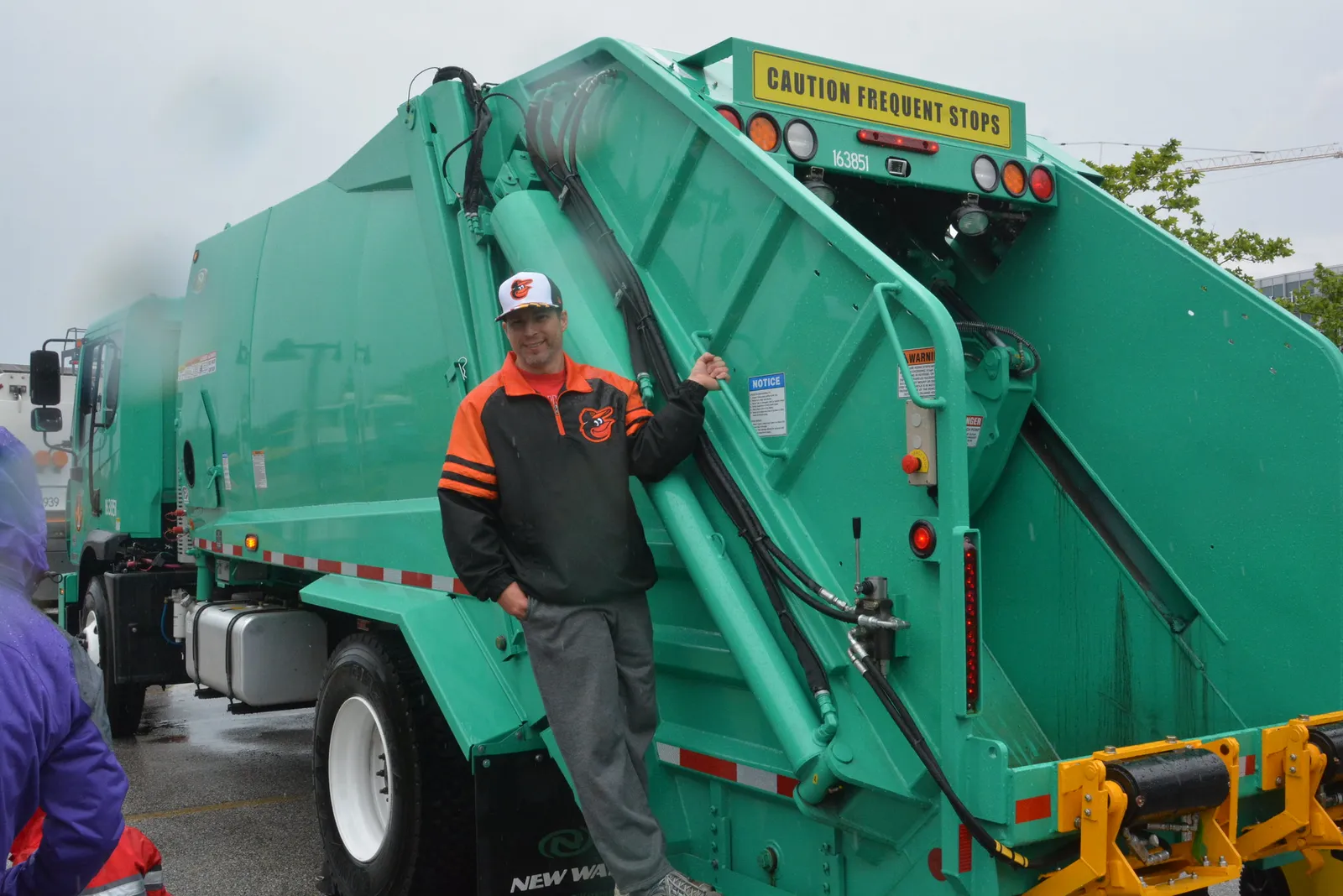
The city’s trash and recycling collection issues are compounding as the Bureau of Solid Waste looks to rebound from a series of challenges. The COVID-19 pandemic, an aging collection fleet and what the plan identifies as a lack of education have all contributed to a recycling system burdened by contamination and inconsistent service.
The city provides service for roughly 210,000 homes, as well as hotels, restaurants, hospitals and other locations, per the draft plan. The city has significantly more material it could divert into its single-stream recyclables program — the plan estimated that recyclables constituted up to half of the city’s waste stream.
But in a change the Bureau of Solid Waste attributed to staffing challenges stemming from the pandemic, recycling collection was slowed from once every week to once every two weeks in January 2022, which is reportedly a violation of the city’s charter. Baltimore City Council leaders have called the bureau’s reduction in service and slow path to restoration “completely unacceptable.” The bureau has said it could restart weekly service in 2024 if new equipment arrives.
The city’s reduced schedule has negatively affected service in other ways as well. The plan notes that once Baltimore stopped collecting trash twice per week, residents began throwing it in their recycling bins, causing a “serious contamination issue.”
Last year, the city commissioned a report from Rubicon to identify ways to improve its collections. Rubicon found that Baltimore’s collection routes had more stops per route than many of its peer cities, and recommended reducing that number to address marathon shifts that could stretch to 14 hours.
The report also recommended increasing the number of recycling collection drivers to 29 and recycling laborers to 58. The Department of Public Works has acknowledged for months that it needs to hire dozens of new drivers. It announced $10,000 signing bonuses in March and held multiple hiring events this spring.
This month, the department said it still needed to hire 23 additional drivers to meet its short-term goal for single-stream recycling services, costing just over $1 million. The department also said it needed to hire 48 solid waste workers to meet its short-term goal for collection staff, costing just under $1.8 million. It predicts reaching the necessary staffing level by February 2024.
Kristyn Oldendorf, an eight-year veteran of waste issues in the city government and now associate director at consulting firm Anthesis Group, said the bureau had worked to digitize routes as a result of the Rubicon report, which she said also assisted with rightsizing routes.
“This whole time, think about driving somewhere you're not familiar with with no GPS. These routes were very dependent on the driver knowing where they were going,” Oldendorf, who formerly led the Office of Waste Diversion, said. “Working with Rubicon was a big step in the right direction.”
Still, when she left the bureau in June 2022, Oldendorf said there “wasn’t really a vision” for addressing long-term staffing issues. The plan identified the need to increase funding so that the bureau can ensure 20% reserves for vehicles and personnel, but Oldendorf said the bureau also needs to focus on safety, health and pay in order to meet its staffing needs.
“We really want to enable every household to recycle, so it's important to have routes that are manageable to the crews but you also have to make sure they're covering all the households,” Oldendorf said.
Executing that vision will also take consistent leadership, something that the city’s Department of Public Works has lacked in recent years. Since 2020, the department has seen four heads, while issues with recycling pickup services, contracting and water mount. In August, the Baltimore Banner reported the department had let its electronic recycling contract lapse, likely months prior.
On July 10, Craig Jeter began serving as acting head of the Bureau of Solid Waste, pending confirmation. Former Deputy DPW Director Richard Luna became the interim head of the department on June 30, following the departure of Jason Mitchell.
“When you have just a lot of people in acting roles, or you're not sure who the long term leader will be, it could be challenging to think about long-term plans,” Oldendorf said.
This is the first story in a two-part series about Baltimore’s solid waste challenges. Stay tuned for the next part, focused on organics recycling, in the coming weeks.



